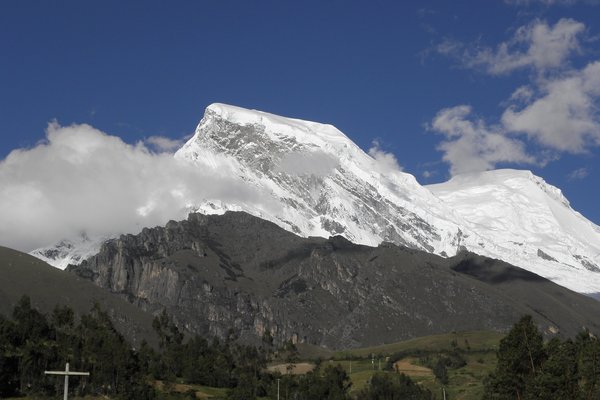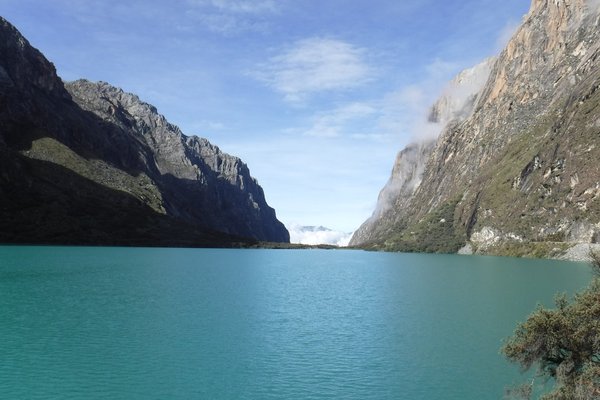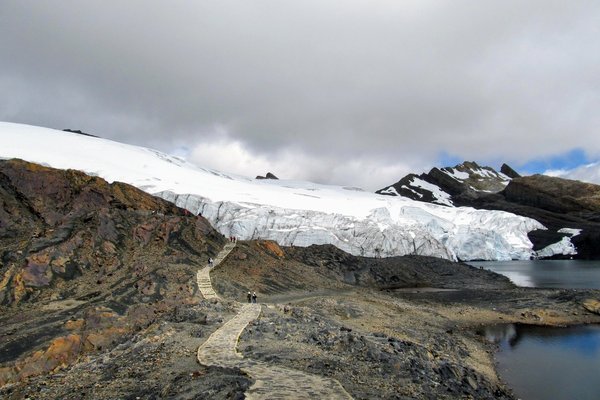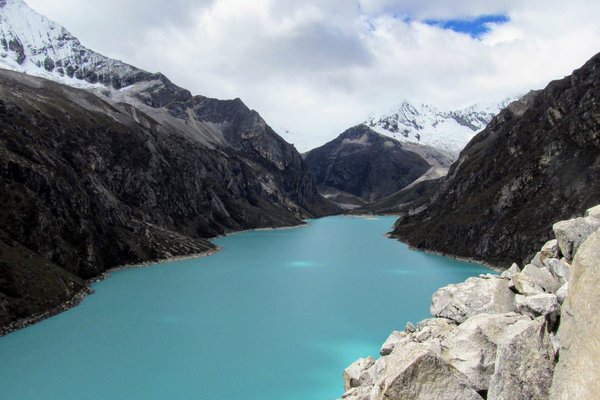Peru
Huascaran National Park
Huascaran National Park is renowned for its number of high snow-capped peaks, its glaciers and its high-altitude plateau.
The Park is located in the Cordillera Blanca range of the Andes and is the highest tropical mountain range in the world. Geologically, it is complex, and strong seismic activity is recorded here. The park also has a wide range of vegetation, including the gigantic bromeliad Puya Raimondi. Spectacled bear, puma, vicuna, and condor are among its notable fauna species.
Community Perspective: The area has great hiking opportunities. Less active persons can opt for a guided tour of the glacial lakes Lagunas Llanganuco. Ammon has described a few alternative day tours, while Frederic shares his experience with several day hikes.
Site Info
Official Information
- Full Name
- Huascaran National Park (ID: 333)
- Country
- Peru
- Status
-
Inscribed 1985
Site history
History of Huascaran National Park
- 1985: Inscribed
- Inscribed
- Type
- Natural
- Criteria
- vii
- viii
Links
- UNESCO
- whc.unesco.org
- Official
-
- facebook.com — Official facebook page of Huascaran NP
All Links
UNESCO.org
- whc.unesco.org — whc.unesco.org/
Official Website
- facebook.com — Official facebook page of Huascaran NP
Community Information
- Community Category
- Natural landscape: Mountain
Travel Information
Recent Connections
-
Perfect Inscriptions
1985 -
Centres of Plant Diversity
SA33 Peruvian Puna - "Among the rich fl… -
Affected by Climate Change
Glaciers in Huascaran National Park (Pe…
Connections of Huascaran National Park
- Geography
-
-
Highest (over 5000m)
Huascaran (6768m) -
Andes
6,768 at its peak - "Huascaran National Park protects the heart of the World's highest tropical mountain range in the central Peruvian Andes" (OUV) -
Territorial Highest points
Huascaran 6746m/22133ft -
Amazon Basin
The waters on the East side of Huascaran NP drain into the Rio Maranon - a tributary of the Amazon -
Glaciers
Said to contain 663 glaciers of which 27 above 6000 mtrs! -
Situated on a Continental Divide
Via the Marañón River into the Amazon and the Atlantic, Via the Santa and Pativilca Rivers into the Pacific -
World's Highest Topographically isolated summits
25th most isolated (2196/6746)
-
- Trivia
-
-
Fatal Accidents or 'disasters'
The Ancash Earthquake May 31 1970. Most of the destroyed towns were outside the inscribed park but "Fifteen members of a Czech expedition were climbing Huascarán at the time, and were among the thousands dead."See www.peakware.com
-
Tourist Treks
Several multi-day treks, such as the Santa Cruz or the Huayhuash treks.See huaraztreks.com
-
- History
-
-
Women Explorers
The lower N summit was first climbed in 1908 by Annie Smith Peck (Possibly the only mountain worldwide to have first been climbed by a woman?).See en.wikipedia.org
-
- Ecology
-
-
Horn Peaks
ArtesonrajuSee en.wikipedia.org
-
Bears
Spectacled bear
-
- Damaged
-
-
Affected by Climate Change
Glaciers in Huascaran National Park (Peru) have shrunk by 15% since 2000 (see link); "The current and potential threats to the park are mainly associated with climate change and the pressure generated by the socioeconomic conditions of the populations" (IUCN outlook 2020)See www.unesco.org
-
Destroyed or damaged by Earthquake
(31 May 1970)
-
- World Heritage Process
-
-
Perfect Inscriptions
1985
-
- WHS on Other Lists
-
-
Centres of Plant Diversity
SA33 Peruvian Puna - "Among the rich flora, the famous Queen of the Andes, known for its colossal inflorescence, stands out." -
Biodiversity hotspot
Tropical Andes -
World Biosphere Reserves
Huascarán (1977)
-
- Timeline
-
-
Miocene
El macizo se conforma íntegramente de granito y su levantamiento se inició en el límite neógeno-cuaternario hace 5.332 millones de años. (wiki)
-
- WHS Names
-
-
Named after a Mountain
Huascaran 6758m -
Named after individual people
It is often suggested that Huascaran is named after the Inca emperor Huascar. But this is disputed: its original name was Huascan, which would mean "attractive" or "tempting".
-
News
No news.
Recent Visitors
Visitors of Huascaran National Park
- Alberto Rodriguez Gutierrez
- Alejandro Lau
- Alexander Lehmann
- Ammon Watkins
- Ana
- Atila Ege
- basementonline
- Bin
- Carlo Sarion
- Carlos Sotelo
- CynthiaSam
- CynthiaW
- Daniela Hohmann
- dave wood
- David Marton
- Delphine Delaunay
- Dirk-pieter
- Els Slots
- emvcaest
- Erik Jelinek
- Francky D'Hoop
- Frédéric M
- Frederik Dawson
- giloudepuertorico
- Iain Jackson
- Jarek Pokrzywnicki
- Jay T
- Jens
- Jon Opol
- Joyce van Soest
- Juha Sjoeblom
- KarenBMoore
- Karito Vies
- Kasper
- Kurt Lauer
- Little Lauren Travels
- Loic Pedras
- Luis Filipe Gaspar
- marcel staron
- Martin
- M.HATADA
- Michael Ayers
- michaelsballard
- Michael Turtle
- Mikan22
- MMM
- Monica Tasciotti
- natlefebvre@hotmail.
- Nihal Ege
- Patrik
- Pchxiao
- Philipp Leu
- Philipp Peterer
- Ralf Regele
- Randi Thomsen
- Rob Wilson
- Roman Bruehwiler
- Sergio Arjona
- sibariam
- Svein Elias
- Tevity
- Thomas Buechler
- Thomas van der Walt
- Tim Allen
- Timonator
- Wojciech Fedoruk
- Zoë Sheng
Community Reviews
Show full reviews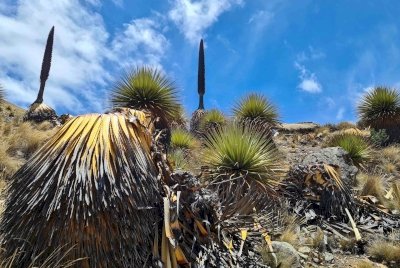
We did the daytrip to Laguna 69, which was offered by our hostel and operated by Solis for 50 /S per Person plus the entrance fee to the NP of 30 /S for one day. I will not describe the details of the hike as it was done before in other reviews e.g. by Fréderic.
However for me the weather in the middle of October was not very good. It was cloudy until noon when we reached the lagoon and up there it started hailing and raining. On the way back down it was a frequently changing mixture of rain and sunshine. Due to the clouds the views of the snow capped mountains were limited and also the colours of the lagoons were less bright than with light. Actually the most beautiful lagoon was the "female" lagoon of the Llanganucos were you pass by in the bus on the way to the trailhead of laguna 69 and normally a photostop is made. Despite my soaked rainclothes that were not so comfortable especially in combination with the cold atop at 4600m during the hail, also I had a bit of a headache even after two days in Huaraz at 3000m which made me take a pill against soroche. Even after doing so a headache remained for the rest of the day. I must say that I was not in the best mood and the weather in the beginning of the raining season was not good, but I think this treck …
Keep reading 0 comments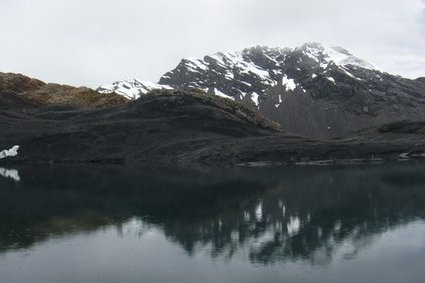
When reading about Huascaran before my travel, I learnt three important things:
- Those mountains look incredibly beautiful.
- They can be visited on multi-day treks or day hikes.
- January and February are the rainy season.
Points 1 and 2 made me plan for six days in this mountain paradise as I am an outdoors enthusiast and an avid hiker. However, as I was there by the end of February and the beginning of March, point 3 made me choose for day hikes rather than treks. I don't really care about getting caught by the rain on day hikes, but spending four or five days on the Santa Cruz trek, doing camping and being constantly soaked didn't seem like an enjoyable experience. Like everyone else, I based myself in Huaraz and booked almost all tours with an operator in town. I booked everything from a single operator and bargained a bundle with him to get a better price. However, they share clients in between companies, so I ended up with a different one each day. The only activity I've done by myself was Laguna Churup on my last day.
I spent my first full day acclimatizing at the altitude. Every travel blog online keep urging you to do it, so I followed their advice and didn't have any syndrome of altitude sickness. I visited Huaraz, where the last day of the Carnival was going on, bought food and stuff for my week there and had an unfortunate visit to the local medical …
Keep reading 0 comments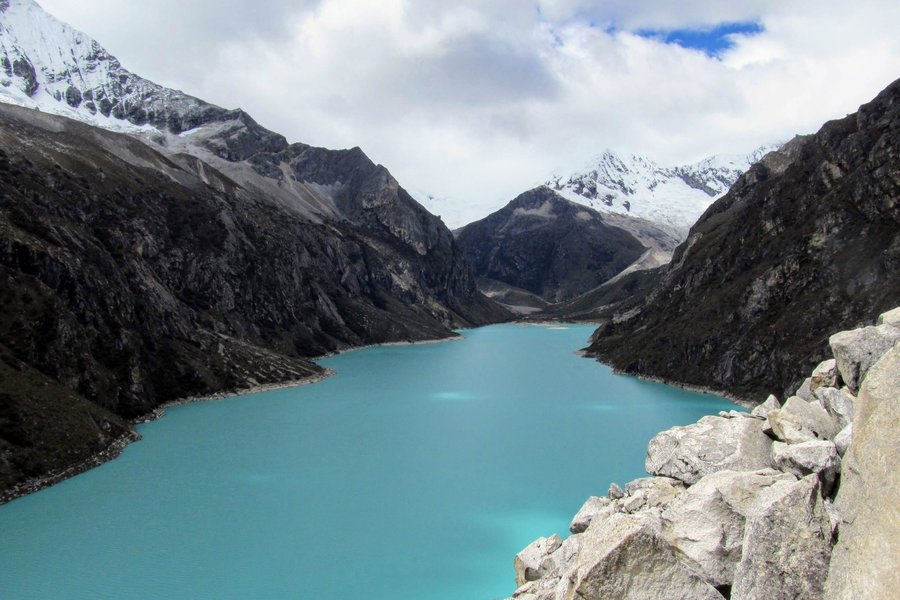
It is impressive to think of how many snow-capped peaks are clustered together in this park so close to the equator. Like everyone else we based ourselves in busy Huaraz for access to the national park. There are many options here to visit the park, from multi-day treks to single day hikes, tours or just staring at mountain peaks from your hotel balcony so should appeal to just about everyone that enjoys nature.
Pretty much every hotel and agency offers the same tours at more or less the same time for similar prices. Public transport and doing it on your own generally didn't seem possible or worth the hassle. We booked a few day trips from our hotel and ended up with a different tour company each day. Our first exposure to Huascaran was on our way to Chavin and there is no doubt that the views of the peaks are better from the north of Huaraz (the road to Chavin is to the south). Regardless of tour destination you quickly find yourself above 4000m and the tree line quite quickly which can be hard on some. We stuck to day tours that didn't involve a lot of walking.
One day we went to Pastoruri glacier, a rapidly melting glacier at 5000m. It was a little disturbing to see it dying right before our eyes while people joyfully posed for selfies. We were able to get up close to the very unique and bizarre looking Puya Raimondi plants on this …
Keep reading 0 comments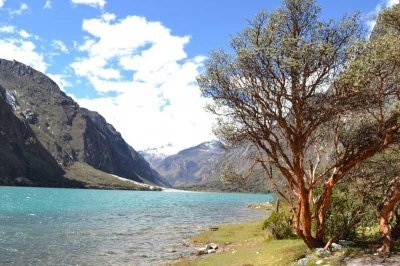
I visited this beautiful national park in June 2012. LC Peru operates daily flights from Lima to Huaraz, the perfect location to explore the park and “nearby” Chavín. I wish I could write about a several days hike through the park, but we also took the lazy way in and visited Lagunas Llanganuco. We did not book a tour but went for public transport instead. From Huaraz we took a public bus to Yungay. Taxis are waiting at Yungay bus station to bring you to the lagunas and back. The lagunas provide stunning views of Peru’s highest mountain and an overall very beautiful scenery. We walked around the lake to do at least a bit of hiking. But I’m sure this area would deserve a much more serious hike.
Like most visitors, we also passed through a different part of the park when driving to Chavín. This high plateau looked like a random Swiss mountain area over the timberline. Still beautiful, but nowhere close the beauty of the Llangnuco region.
Keep reading 0 comments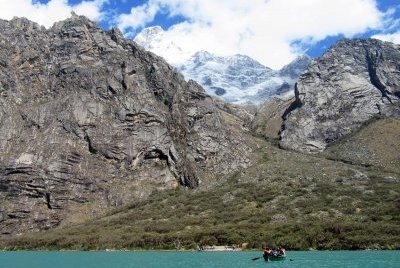
Peru may be known for its cultural World Heritage Sites, but the first site I chose to see upon arriving in country this past October was a natural site: Huascarán National Park. Within hours of landing in Lima, I was on a bus to the lovely small mountain town of Huaraz, and the next day I took the same type of tour as Els to the Lagunas Llanganucos. The mountain scenery was spectacular, and I had an early preview of the park's snow-covered peaks from the breakfast lounge on the top floor of my hotel. Up close on the tour, the mountains were just as impressive, and greener than I expected on the approach to the lakes. Only the lower lake was accessible for the tour, but we had one and a half hours to explore. I opted for a boat tour, then hiked on the walking trails around the lakeshore, in the shadow of Huascarán, the highest peak in Peru. I was hoping to see more Andean wildlife than I saw on my visit to Sangay National Park in Ecuador, but alas, my scorecard stood at: Animals not seen -- spectacled bears, pumas, vicuñas, condors; Animals seen -- ducks and two alpacas hiding amidst the trees. As for flora, even though I didn't see the Queen of the Andes bromeliad on the tour, I did appreciate the Polylepis forest around the lake. I also appreciated the particularly amenable weather, which was very welcome after my misty visit to Sangay. …
Keep reading 0 comments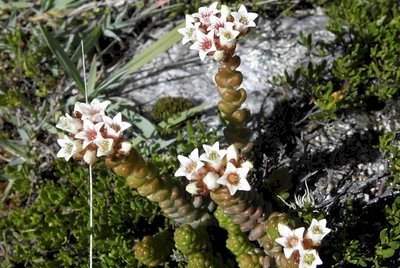
Huascaran is a popular area for hikers. The regional centre of Huaraz is well-geared to serve them, and it is a pleasant place to stay for a couple of days. I encountered many Swiss travelers here - mysteriously attracted to a landscape that is quite similar to that in their home country. Huascaran's forte clearly is the beauty of its snowcapped peaks.
For a non-walker, the easiest way to see the National Park is to take a tour from Huaraz to the Lagunas Llanganuco. This kind of tour is conducted daily. Like other organized day tours that I have taken in Peru, they try to take in too much in a too short time span. The guides only speak Spanish but are pretty knowledgeable.
The Huascaran peak was hidden behind clouds for the first part of our tour. There are supposedly great vistas from the towns in the valley below. One of these towns is Yungay, forever connected to the mountain after an earthquake and a consequential avalanche destroyed the village in 1970. They now have turned the location of the former village into an impressive place of remembrance.
After several stops in the valley, we finally reached the first of the Lagunas Llanganuco. It's a pretty turquoise glacier lake. There are some short walks in the area that let you come close to the plant life here. The lake is partly surrounded by the typical Polylepis Forest. Animal life is much more scarce.
On our …
Keep reading 0 comments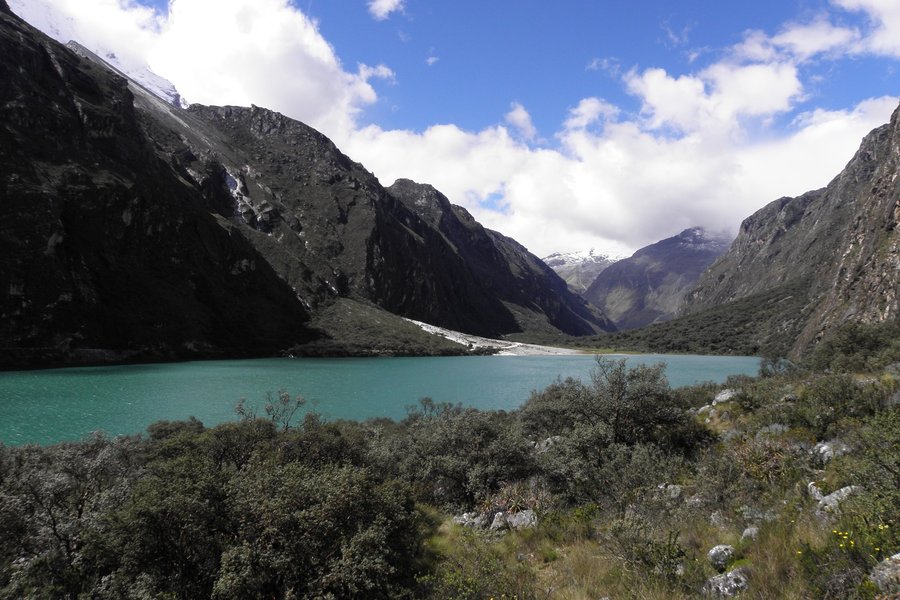
Again, I am delighted to be the first to review this wonderful WHS.
Huascaran NP is a truly beautiful place. I doubt there is anywhere else on Earth where you can so easily access such enormous mountains. The hiking here is truly wonderful, and hugely varied. I have spent several days walking to glaciers, lakes and valleys. I cannot recommend this site highly enough.
I am lucky enough to be writing this at a charming place called 'The Lazy Dog Inn', which is on the border of the park. From here, some of the most beautiful and least visited parts of the park are easily visited. I highly recommend walks into 'Quebrada Llaca' and 'Quebrada Cojup' (excuse any spelling).
Entry fees are a very reasonable $2 per day or about $25 for a month pass.
Keep reading 0 comments
